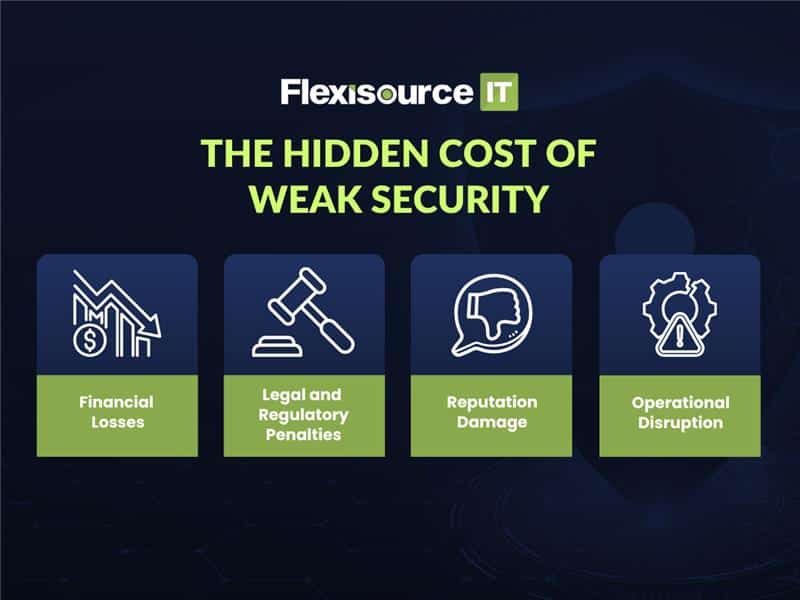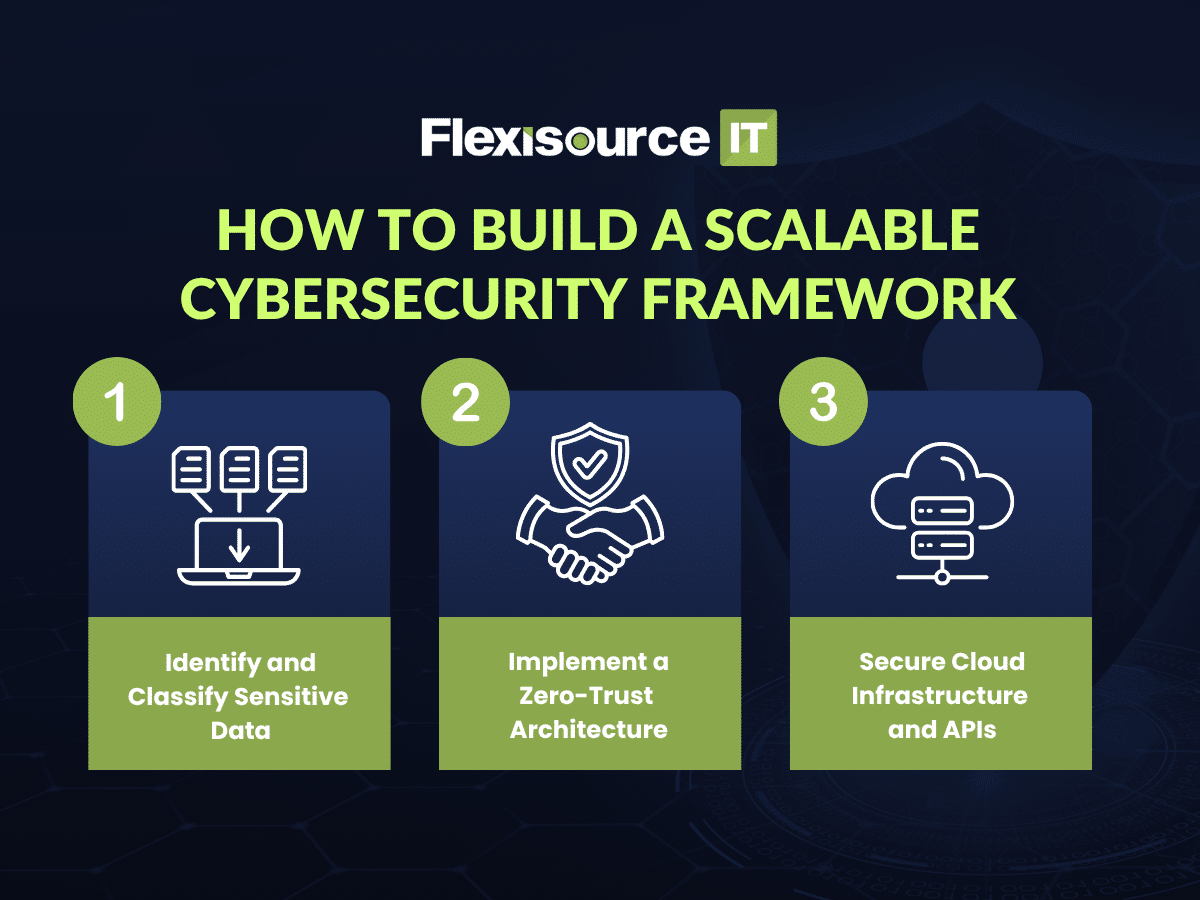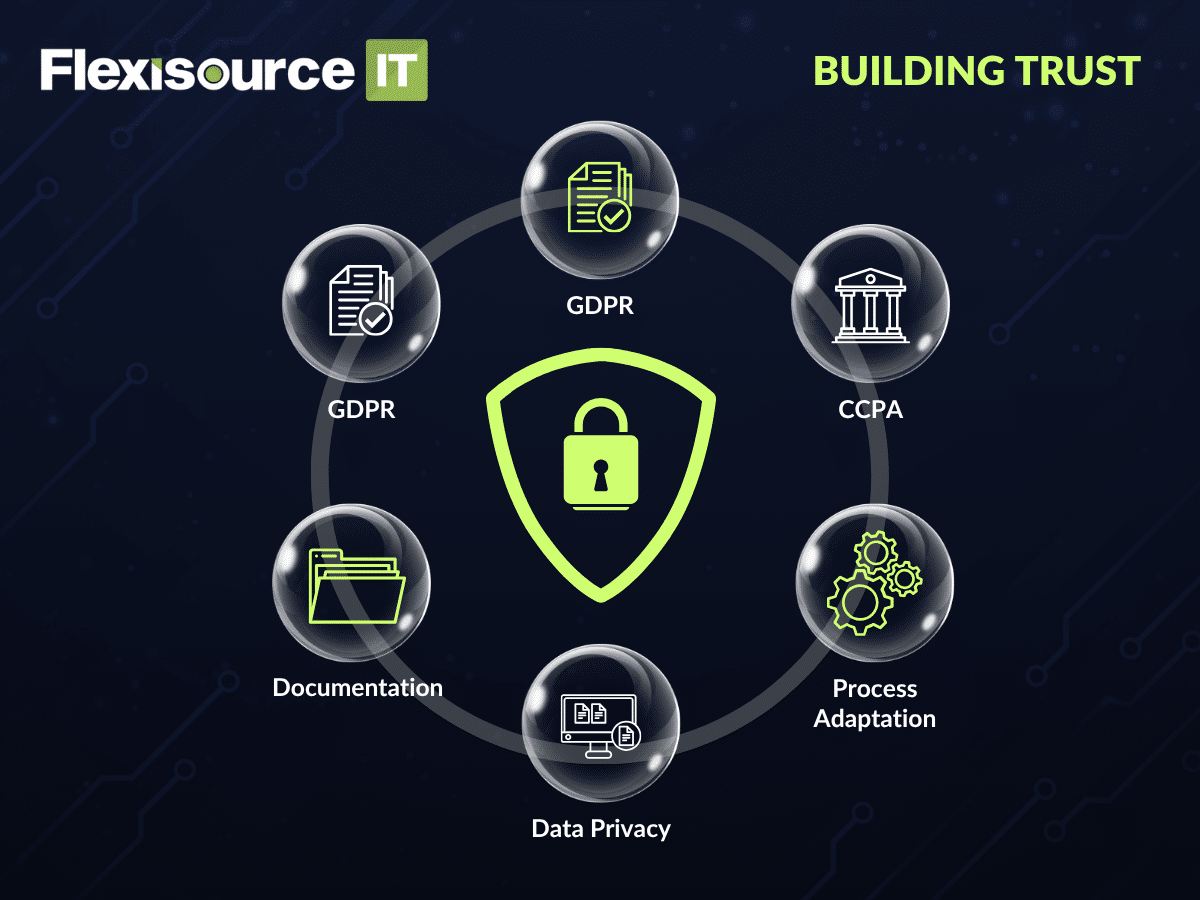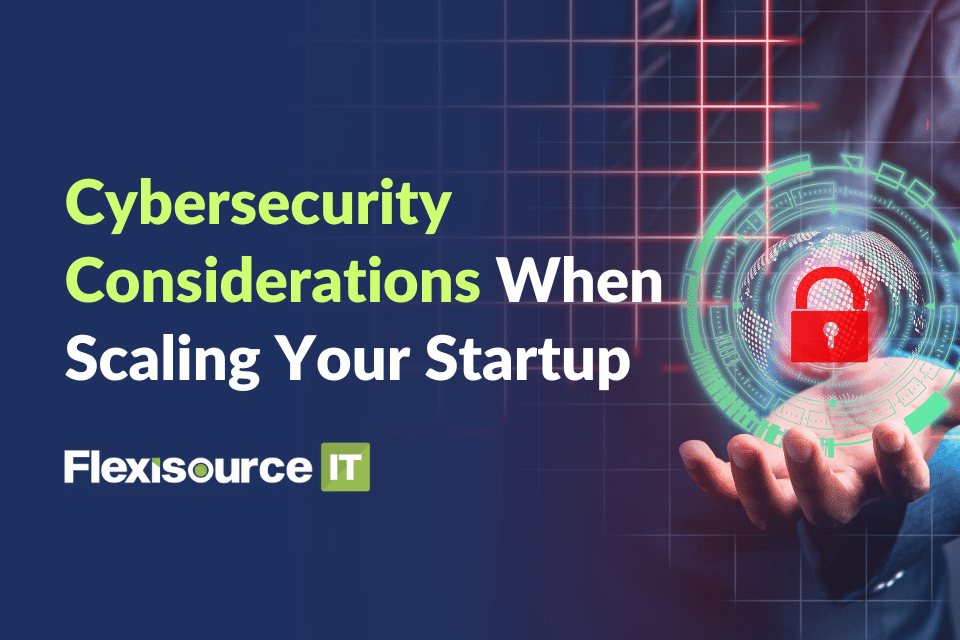As startups grow, cybersecurity often slips down the priority list. Many founders think they can “worry about it later,” focusing first on product and growth. But that mindset can backfire quickly. Every new customer, employee, or integration increases your exposure to risk, and waiting too long can mean paying the price in lost data, revenue, or trust.
This guide explains what effective cybersecurity management looks like for scaling startups. We’ll walk through key areas like data protection, compliance, access control, team awareness, and infrastructure security; all essential to keeping growth safe and sustainable.
Why Does Cybersecurity Matter as You Scale?
When your startup starts to scale, everything grows, such as your customer base, your data, your tools, and your exposure to risk. The more moving parts you have, the easier it becomes for attackers to find weaknesses.
Here’s why cybersecurity should be part of your scaling strategy:
- Your attack surface expands: More data, users, and third-party integrations mean more entry points.
- Security incidents are expensive: Breaches can drain cash, delay product launches, and distract leadership.
- Investors expect strong protection: Solid cybersecurity management signals maturity and reliability.
- Customers demand trust: If you handle personal or financial data, security is very much expected.
Read: Combining Artificial Intelligence and Cybersecurity

Ignoring cybersecurity early can cost you more than fixing issues later. The damage goes far beyond money: it affects your reputation, operations, and long-term growth potential.
A few common consequences include:
- Financial losses: Data breaches, ransomware attacks, and downtime can cost millions.
- Legal and regulatory penalties: Non-compliance with GDPR, CCPA, or SOC 2 can lead to fines and audits.
- Reputation damage: Losing customer data erodes trust, making it harder to win business or investment.
- Operational disruption: Attacks can bring your systems offline for hours or days, halting productivity.
Building a Scalable Cybersecurity Framework

The best time to design your security framework is before your startup hits rapid growth. If you build it into your operations early, it scales naturally alongside your business, instead of holding it back later.
A good starting point is a risk-based approach. Not every threat deserves the same level of attention. Identify which assets are most critical to your business and focus your protection there first.
Identify and Classify Sensitive Data
Understanding your data is the foundation of good cybersecurity management.
- Map your data flows: Track how information moves between systems and users.
- Categorise data sensitivity: Separate public, internal, and confidential information.
- Limit access: Restrict who can view or edit sensitive data.
- Use encryption and backups: Protect data in transit and at rest.
Implement a Zero-Trust Architecture
A zero-trust model assumes no user or device is automatically safe. Every request must be verified, even from inside your network. For a startup, this doesn’t need to be complicated. It’s about requiring strong authentication, regularly checking user privileges, and monitoring unusual activity.
Zero-trust becomes especially important as your team grows and employees work from different devices and locations. It ensures that one compromised password doesn’t turn into a company-wide breach.
Secure Cloud Infrastructure and APIs
Cloud platforms make scaling easier, but they also introduce unique risks. Misconfigured settings or over-permissive accounts are some of the most common causes of breaches in startups.
Here’s how to stay secure:
- Keep admin privileges limited.
- Enable encryption for all sensitive data.
- Monitor logs and traffic for unusual behavior.
- Review third-party integrations regularly to make sure they meet your security standards.
Managing Access, Identity, and Authentication
Access control tends to get messy as startups hire fast. Suddenly, half your team has admin access and no one’s sure who still needs it. Cleaning that up early prevents bigger problems later.
Use role-based access controls (RBAC) to define clear permission levels for each function. For instance, engineers may need production access, while marketing doesn’t. Pair this with multi-factor authentication (MFA) to protect logins even if passwords are stolen.
For larger teams, tools like Okta or Microsoft Entra ID can help you manage identity across all systems in one place. They also make onboarding and offboarding smoother, which is a big plus for startups with fast-changing teams.
Compliance and Data Privacy Considerations
As you expand into new regions or industries, compliance rules become more complex. Frameworks like GDPR, CCPA, SOC 2, and ISO 27001 define how data must be collected, stored, and secured.
Instead of treating compliance as a one-time project, make it part of your ongoing cybersecurity management. Build processes that can adapt to new regulations, and document how you handle data at every stage. This not only keeps you compliant, but it builds trust with partners and customers who care deeply about privacy.

Conduct Regular Security Audits and Penetration Testing
A security system is only as strong as its weakest link, and those weak points often change as you grow. Regular audits and penetration tests help uncover vulnerabilities before attackers do.
If your team lacks in-house expertise, hiring third-party auditors or managed security providers can be well worth the investment. Their outside perspective often reveals blind spots that internal teams overlook.
Employee Training and Security Culture
Even the best technology can’t protect your company if your people don’t understand the risks. Many cyber incidents start with simple human mistakes, such as clicking on a phishing email, reusing a password, or sharing confidential data by accident.
Build a culture where security is everyone’s job. Train employees to recognise threats, report suspicious activity, and follow best practices for handling data. Keep training practical and ongoing. Short refreshers every few months are far more effective than a single annual session.
Incident Response and Business Continuity
No company is immune to incidents. The difference between chaos and control lies in your response. Every scaling startup should have a clear incident response plan that outlines who does what if a breach occurs.
That plan should cover:
- How to detect and confirm an incident
- Who to notify and when
- How to contain and recover from the breach
- How to communicate with customers and regulators
Alongside that, build a backup and disaster recovery plan. Test it regularly to ensure you can restore operations quickly after an attack or system failure.
Integrating Security into Product Development
Security should be part of how you design and build your product. Incorporating security from the start reduces vulnerabilities, saves engineering time, and boosts user confidence.
Adopt a “Secure by Design” Mindset
When developing new features, consider potential security risks early in the design process. Encourage engineers to ask:
- What data does this feature handle?
- How could it be misused or exploited?
- What safeguards should be built in from day one?
This proactive mindset turns security into a product strength rather than a post-launch fix.
Use DevSecOps Practices
DevSecOps brings security into your continuous integration and deployment pipeline. By automating code scanning, dependency checks, and configuration reviews, you catch weaknesses before they reach production.
Tools like Snyk, GitGuardian, and Aqua Security can help integrate these checks into your workflow without slowing releases.
Monitoring, Detection, and Threat Intelligence
Strong cybersecurity management is about prevention and awareness. As your company grows, real-time visibility into your systems becomes crucial. Without strong monitoring, small issues can go unnoticed until they turn into major breaches.
Consistent detection and intelligence gathering allow you to move from a reactive stance to a proactive defense strategy.
Build Continuous Monitoring Capabilities
Set up centralised logging and alerting systems to spot unusual activity quickly. Tools like AWS CloudWatch, Datadog, or Splunk can track network behavior, login attempts, and data transfers in real time.
Regularly review these logs to identify patterns or anomalies that might indicate deeper vulnerabilities. Over time, these insights help you strengthen weak points and refine your overall security posture.
Leverage Threat Intelligence
Stay informed about the latest attack methods targeting your industry. Subscribing to threat feeds or joining cybersecurity information-sharing groups can help your team recognise early warning signs and respond faster.
Incorporating threat intelligence into your workflows enables faster decision-making when potential threats arise. It also helps your leadership understand where to allocate resources for the greatest security impact.
Vendor and Supply Chain Security
Even if your internal systems are airtight, your vendors might not be. Third-party software and service providers can introduce risks that affect your entire organisation. As your startup relies on more external tools to scale, even a single weak link in the supply chain can expose your entire network to compromise. Effective cybersecurity management requires treating vendor security with the same diligence as your own systems.
Assess and Monitor Vendor Security
Before onboarding a new vendor, review their security policies, compliance certifications, and incident history. Once they’re integrated, monitor how they handle your data and what level of access they have.
Establish regular check-ins to verify that their security practices remain up to date as standards evolve. It’s also wise to maintain an inventory of all third-party relationships, so you can quickly evaluate risk exposure if one of them experiences a breach.
Establish Vendor Risk Management Policies
Create clear policies for vendor assessments, data-sharing agreements, and breach notifications. A well-documented vendor risk management program ensures accountability and transparency across your supply chain.
Define minimum security requirements for all partners and require them to report any incidents that could affect your operations. Over time, a consistent policy framework helps build stronger, more reliable vendor relationships, and significantly reduces your overall risk surface.
Security Automation and Scalability
Manual processes can’t keep up as your startup scales. Automation helps you maintain consistent, efficient cybersecurity management across growing systems and teams. As your infrastructure expands, automating key security functions ensures nothing critical slips through the cracks.
It also frees your team to focus on strategy and innovation instead of repetitive maintenance tasks that consume valuable time.
Automate Repetitive Security Tasks
Routine actions like patching, vulnerability scanning, and access reviews can be automated to save time and reduce human error. Platforms like CrowdStrike, Rapid7, and Qualys can simplify these workflows. By scheduling automated scans and updates, you maintain strong defenses even when your team is busy or understaffed.
Over time, automation also helps establish consistency in how your startup handles threats, making compliance and auditing much smoother.
Use Security Orchestration Tools
As your environment expands, consider Security Orchestration, Automation, and Response (SOAR) tools. They connect your monitoring systems, incident response playbooks, and ticketing tools – helping your team act fast when issues arise.
These tools can automatically triage alerts, route incidents to the right people, and even execute predefined response actions. Implementing orchestration early creates a scalable foundation for security operations that grows seamlessly with your startup.
Data Encryption and Key Management
Encryption is one of the strongest lines of defense against data breaches, but it’s often overlooked or mismanaged in startups. As your systems scale, more data moves across multiple environments, from cloud storage to third-party integrations, and each one presents potential risks.
A strong encryption strategy protects sensitive information even if attackers gain access to your infrastructure. Making encryption a core part of your cybersecurity management plan demonstrates to investors and customers that your company takes data protection seriously.
Encrypt Data in Transit and at Rest
Ensure all sensitive data is encrypted both when stored and when transmitted. Use protocols like TLS 1.3 for web traffic and strong AES-256 encryption for databases or backups. Consistent encryption practices prevent unauthorised access and reduce the impact of breaches, since stolen data remains unreadable.
It’s also important to review and update encryption standards regularly, as algorithms and best practices evolve over time.
Manage Encryption Keys Securely
Don’t store encryption keys on the same servers as the data they protect. Use dedicated key management systems (KMS) such as AWS KMS or HashiCorp Vault to handle encryption keys securely and centrally.
Rotating encryption keys on a set schedule further reduces the risk of compromise from insider threats or outdated credentials. By managing keys with care and separation, you maintain tighter control over who can decrypt sensitive data, reinforcing the integrity of your entire security framework.
Measuring Cybersecurity Performance
Scaling startups need to know whether their security efforts are actually working. Tracking progress through measurable indicators ensures continuous improvement.
Define Key Security Metrics
Identify performance indicators like:
- Mean time to detect (MTTD) and respond (MTTR) to threats
- Number of vulnerabilities resolved per quarter
- Compliance audit success rate
- Percentage of systems under security monitoring
Conduct Regular Reviews and Adjust Strategies
Use these metrics to evaluate where your defenses are strongest, and where they need attention. Regular reviews keep your cybersecurity management strategy aligned with your company’s growth goals.
Partnering with Cybersecurity Experts
At some point, it makes sense to bring in professionals. Cybersecurity consultants and managed service providers (MSPs) can help evaluate your current setup, identify gaps, and strengthen your defenses.
For startups with limited internal security resources, these partnerships provide ongoing monitoring and expertise without the cost of a full-time security team. Think of them as an extension of your tech stack, like one focused entirely on keeping your company safe.
Strengthening Security to Power Growth
Scaling doesn’t have to mean sacrificing safety. In fact, strong cybersecurity management can accelerate growth by building investor confidence, protecting brand reputation, and creating a secure foundation for innovation.
Before your next growth milestone, take time to audit your current security posture. Fix the gaps now, while they’re manageable. A well-secured startup not only grows faster, but it grows smarter, safer, and stronger.
A strong security is what makes progress possible. Contact Flexisource IT today to help you find a strong cybersecurity partner.





